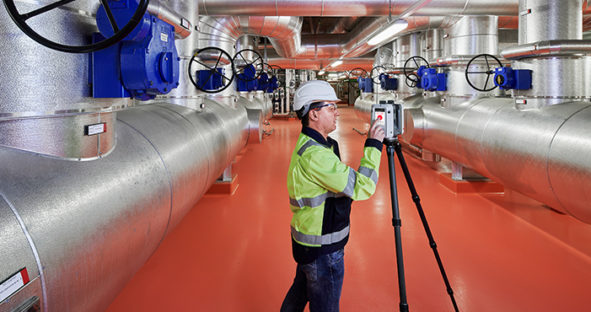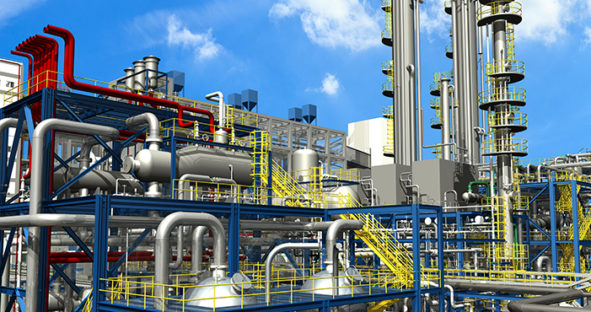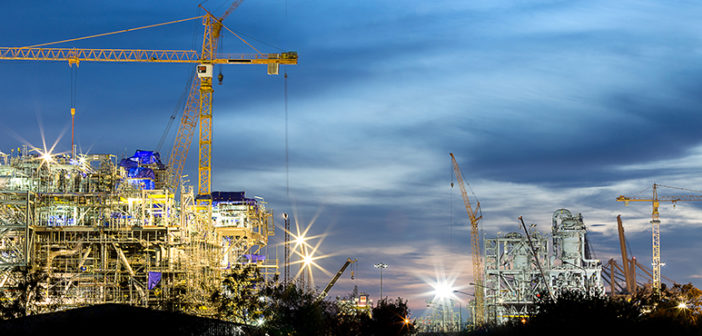When installing new equipment in plants where a maze of steel dominates the space, conflicts with the building’s existing or retrofitted elements are highly likely. Whether the project takes place on an oil refinery, wastewater treatment plant or automotive facility, the clashes will inevitably lead to delays and additional costs. Critical infrastructure, in particular, cannot afford these setbacks given the vital role they serve for communities. Structural conflicts are completely avoidable with the right strategy and preparation.
The Leica RTC360 laser scanner is a 3D reality capture solution that can create as-built documentation of plant environments with a high level of precision, which in turn helps engineers and surveyors to:
- Pre-plan a flawless installation of plant equipment
- Fabricate the new system/equipment
- Avoid clashes with major building components and existing structures
- Design more efficient plant layouts
Fast and accurate 3D documentation

When installing new equipment in large complex plant structures, speed and accuracy are crucial factors, yet neither can be achieved with traditional, manual methods. Measuring installation areas by hand using outdated tools is time-consuming and leaves the project vulnerable to inaccuracies and omissions, resulting in unexpected clashes and compatibility issues.
Furthermore, documenting challenging plant environments with a traditional approach could involve leasing equipment to work at height and to access hard-to-reach areas, complicating projects with unwelcome safety concerns. It’s also likely the work would need to be carried out during normal operation of the plant, with field technicians having to overcome issues of noise and high temperatures.
The RTC360 is designed to be fast, agile and precise. It’s a revolutionary laser scanner that makes 3D documentation faster than ever before, with a measuring rate of up to 2 million points per second, capturing crisp, high-quality scans with one-touch operation.
It’s tuned for short to medium scan ranges and High-Dynamic Range (HDR) applications, which require the highest level of accuracy. And, at only 6 kg, the RTC360 is a compact tool that can be transported anywhere within a plant site and set up with its collapsible tripod. Errors, and resultant conflicts, are minimised due to its accuracy, portability and power.
Clash detection simplified

With the RTC360, clash detection is a two-stage process: firstly, capturing an entire plant environment in 3D and delivering a pre-registered point cloud in the field through the Leica Cyclone FIELD 360 mobile device app; secondly, working with the scan data in Leica Cyclone REGISTER 360 on your office computer and exporting it to Leica Cyclone MODEL modelling software to identify and eliminate potential structural conflicts.
Users can quickly:
- Measure entire environments in millimetric detail
- Analyse the point clouds from different angles
- Explore how areas and systems of the plant are related to each other
- Zoom in and out on specific plant features
- ‘Return’ to the plant virtually as often as needed
- Add tags anywhere in the scan in the form of text, picture, video or audio
When it comes to installing new equipment, accurate documentation of the as-built condition of existing plant environments enables teams to design out clashes before construction. The RTC360 can help save time and costs, reducing the number of technicians required to complete the documentation, providing clean data and a smooth workflow. It also improves on-site safety, cutting down the time that field crews spend in difficult environments. Ensure new units are installed without unnecessary rework or project delays with this powerful 3D reality capture solution.
Find out more about how the Leica RTC360 can help you when installing new plant equipment: Learn more














